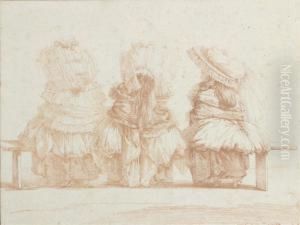Francois Auguste Moitte Paintings
François Auguste Moitte was a French sculptor born on May 22, 1746, in Paris, France. He was the son of a well-known sculptor, Pierre-Étienne Moitte, who played a significant role in shaping his early education in the arts. François Auguste Moitte was known for his classical style, which was heavily influenced by the ancient art and architecture that were being rediscovered during his lifetime. This was a period of great enthusiasm for the classical past, known as neoclassicism, which dominated European art and architecture in the late 18th and early 19th centuries.
Moitte was a student at the Royal Academy of Painting and Sculpture in Paris, where he honed his skills under the guidance of renowned sculptors such as Jean-Baptiste Pigalle and Augustin Pajou. His talent was recognized early on, and he won the prestigious Prix de Rome in 1771, which allowed him to study at the French Academy in Rome. This experience had a profound impact on his development as an artist, as he immersed himself in the study of ancient Roman sculptures and monuments.
After his time in Rome, Moitte returned to France, where he became a respected member of the artistic community. He was admitted to the Royal Academy in 1783 and received numerous commissions for decorative sculpture in the neoclassical style, which were well suited for the public buildings and monuments of the era. Some of his notable works include the reliefs for the Cour Carrée of the Louvre Palace and sculptures for the Panthéon in Paris.
During the French Revolution, Moitte's career continued to prosper as he was commissioned to create works that reflected the new political ideals and historical themes of the time. Despite the turbulent political environment, Moitte managed to navigate the changes in the art world and government patronage.
François Auguste Moitte's artistic contributions were cut short by his untimely death on April 3, 1810, in Paris. His legacy is preserved through the many works he left behind, which are exemplary of the neoclassical style that aimed to emulate the grandeur and simplicity of ancient art. His sculptures remain an important part of France’s cultural heritage and continue to be studied and appreciated for their craftsmanship and historical value.
